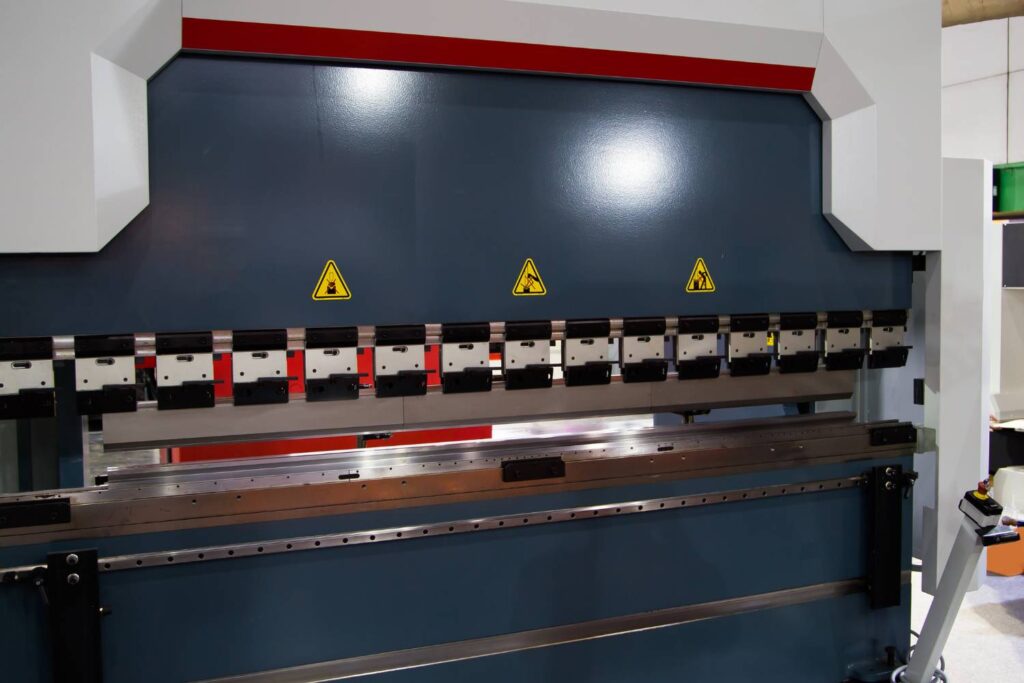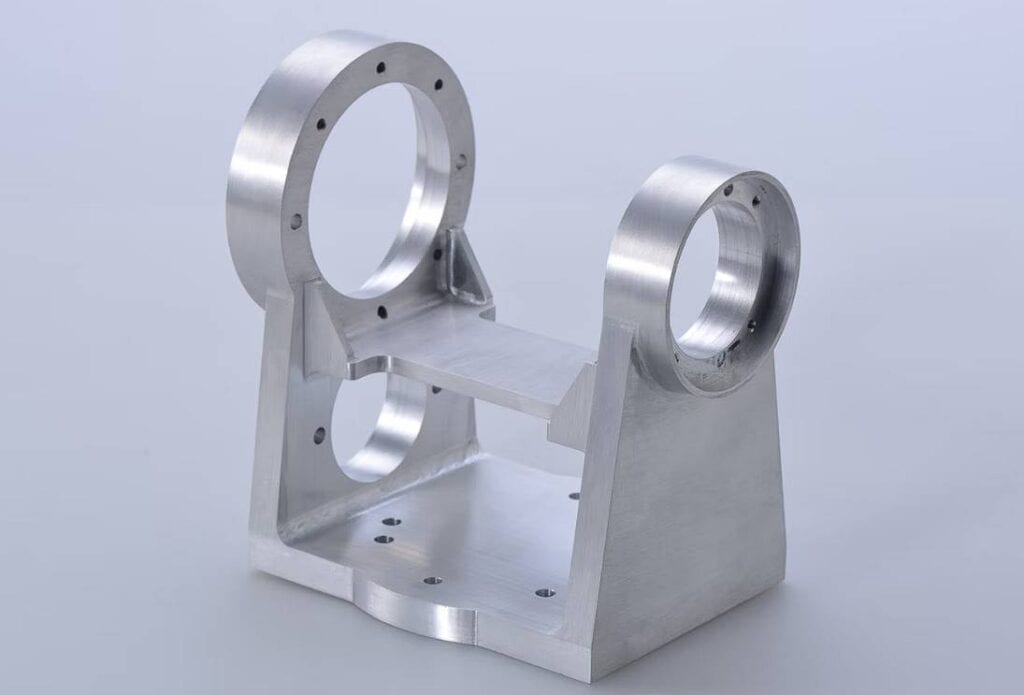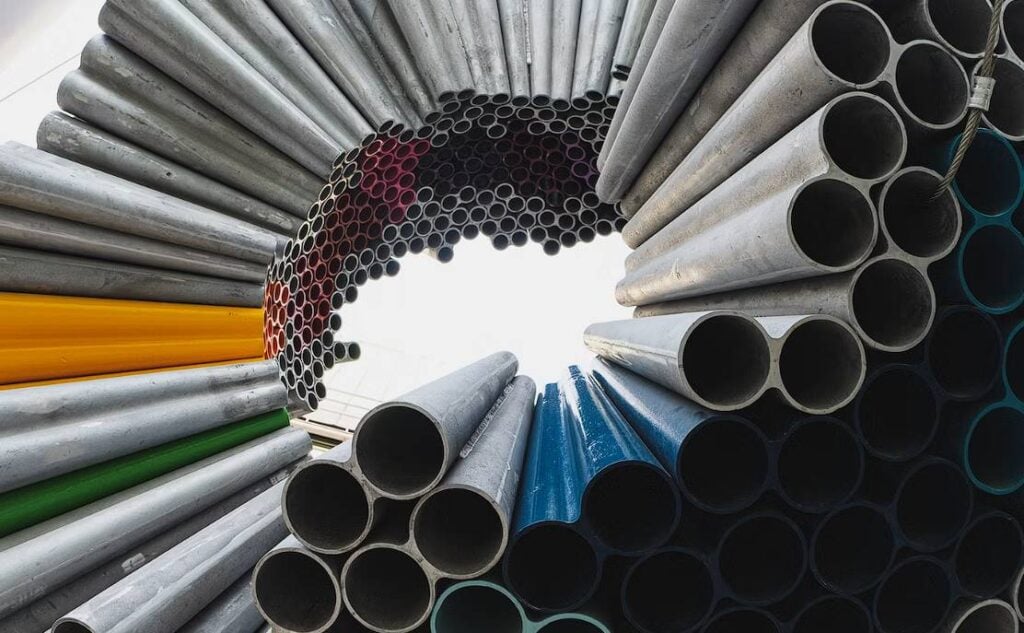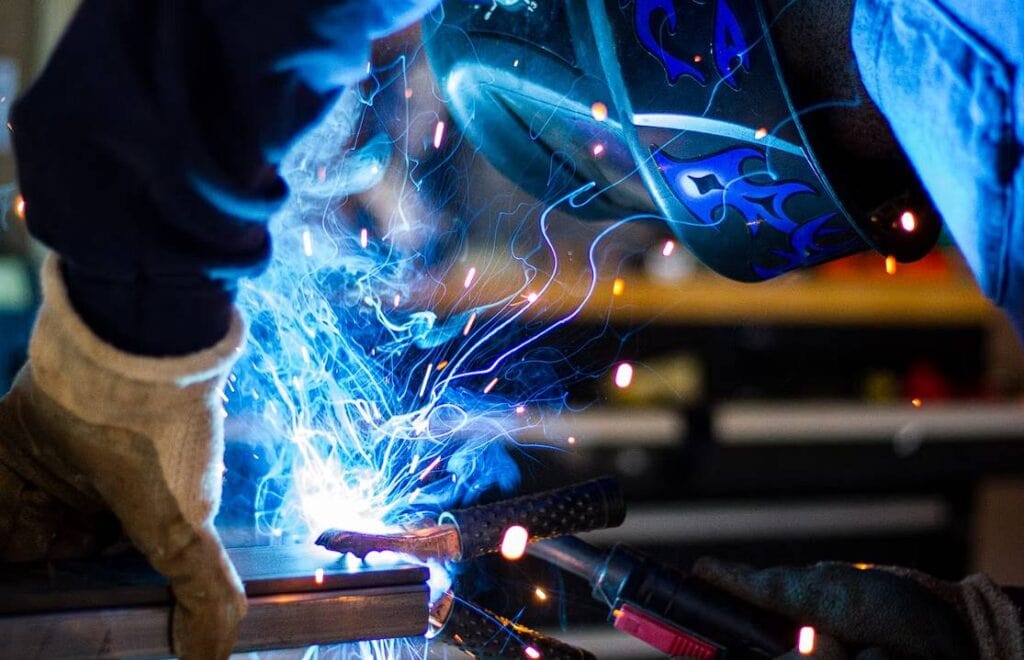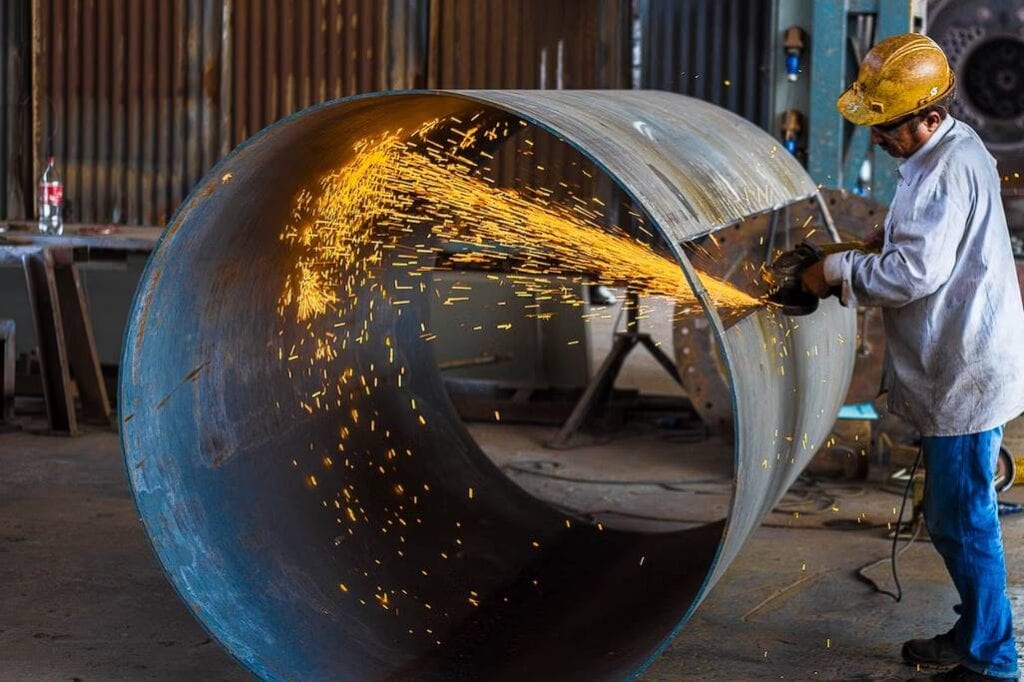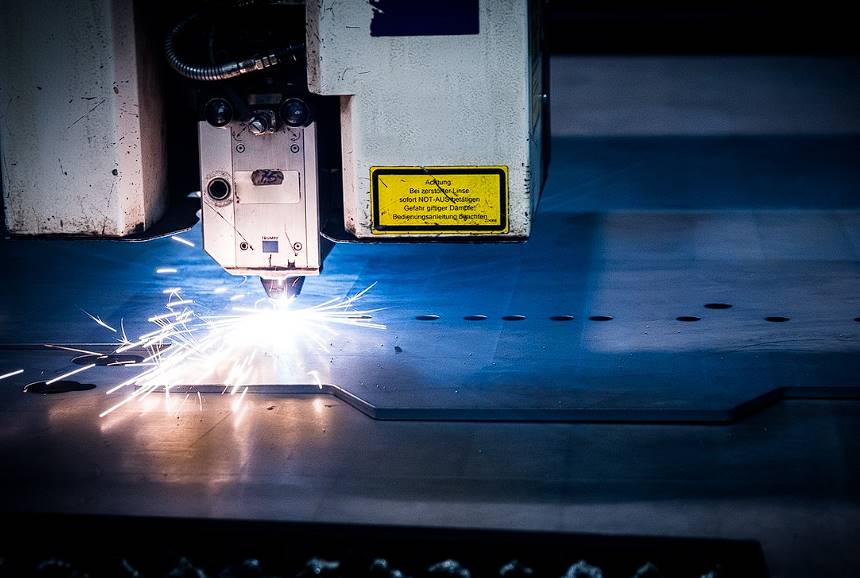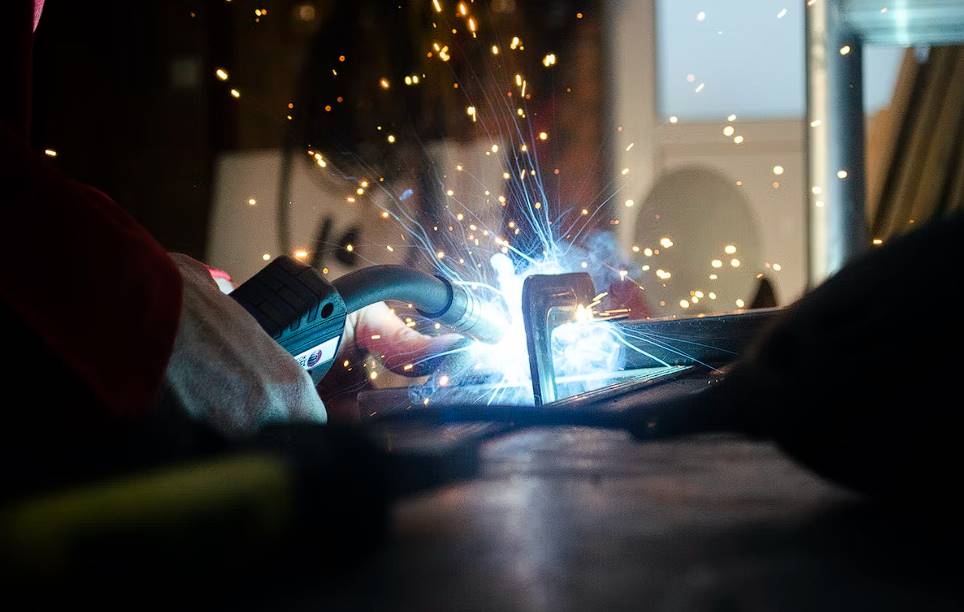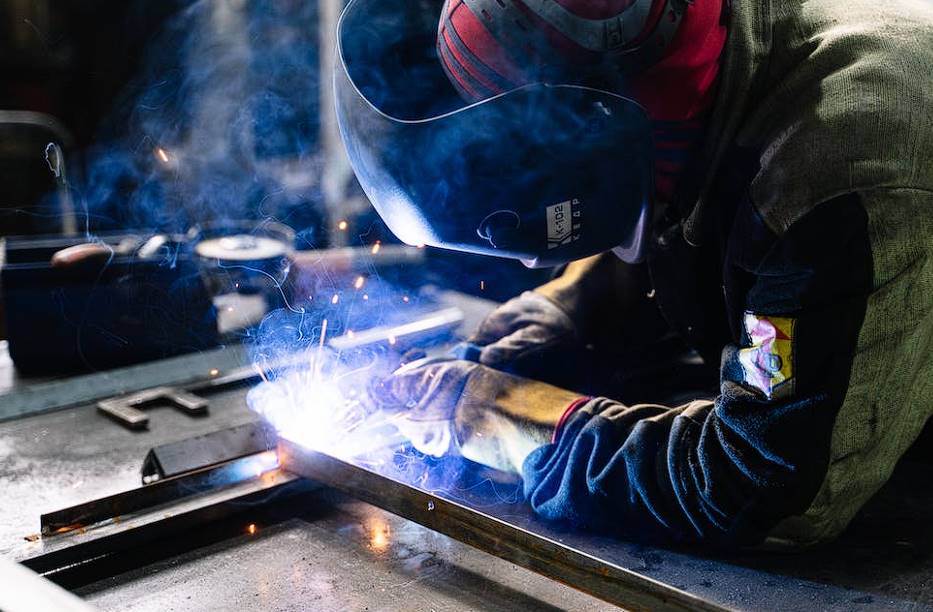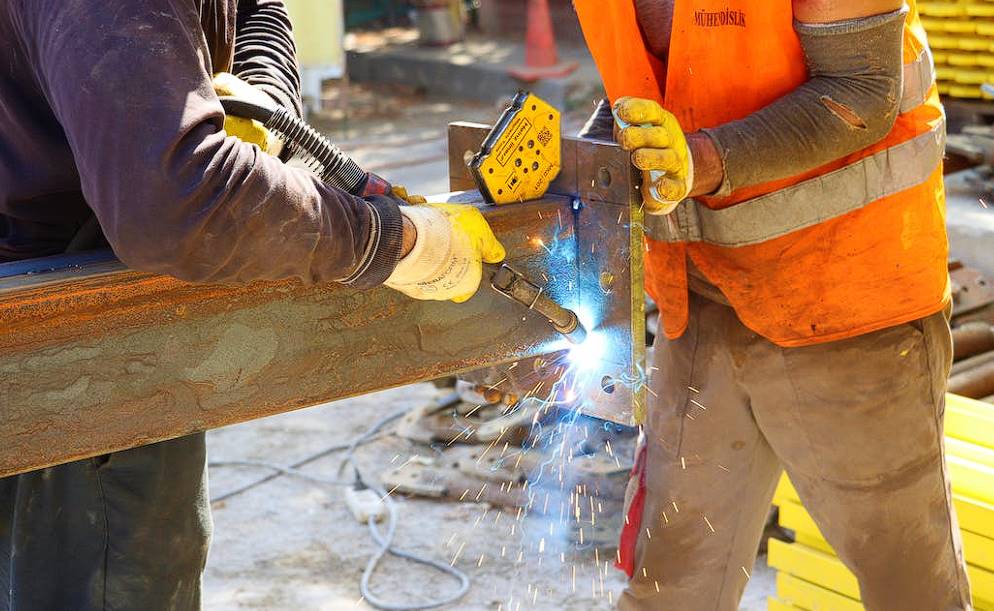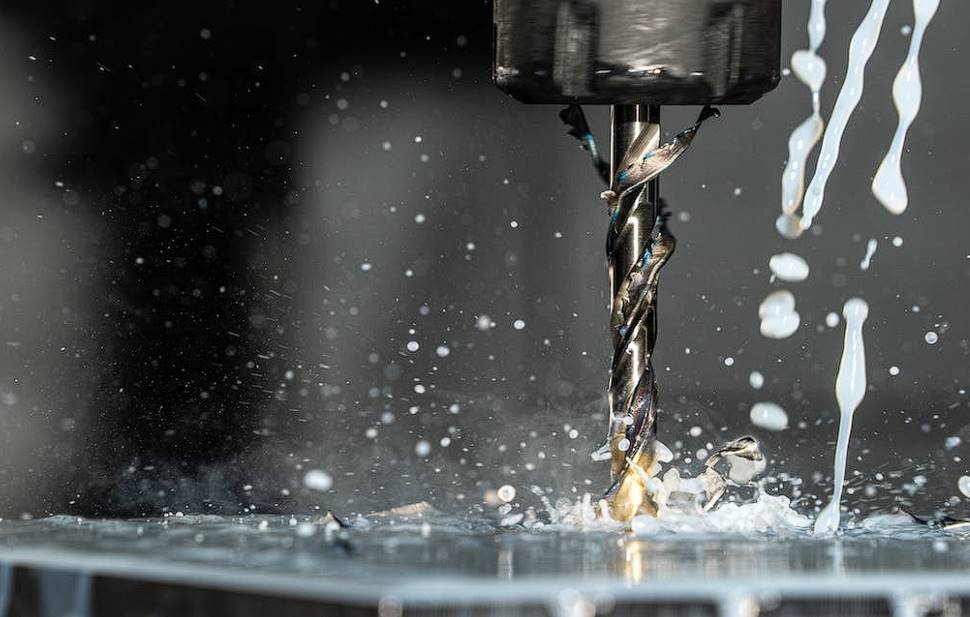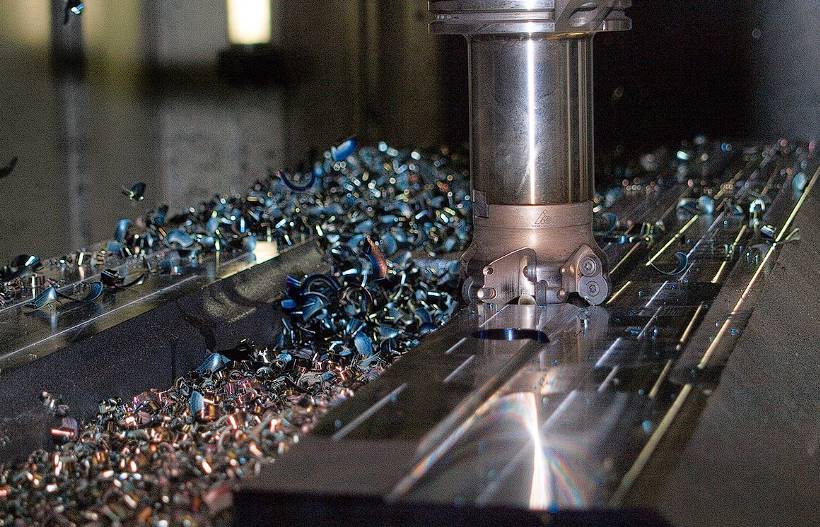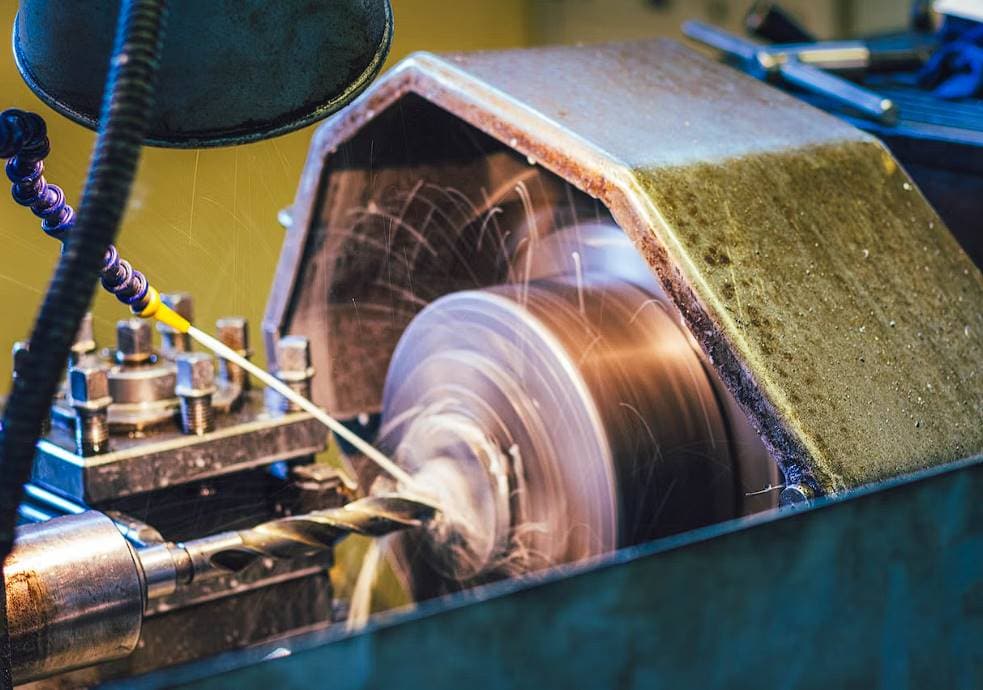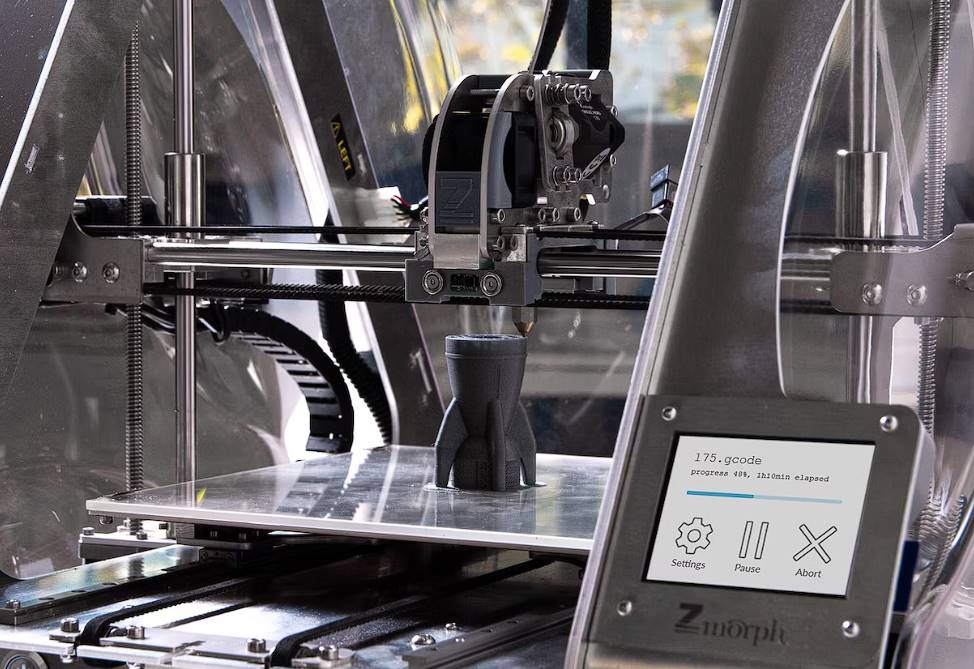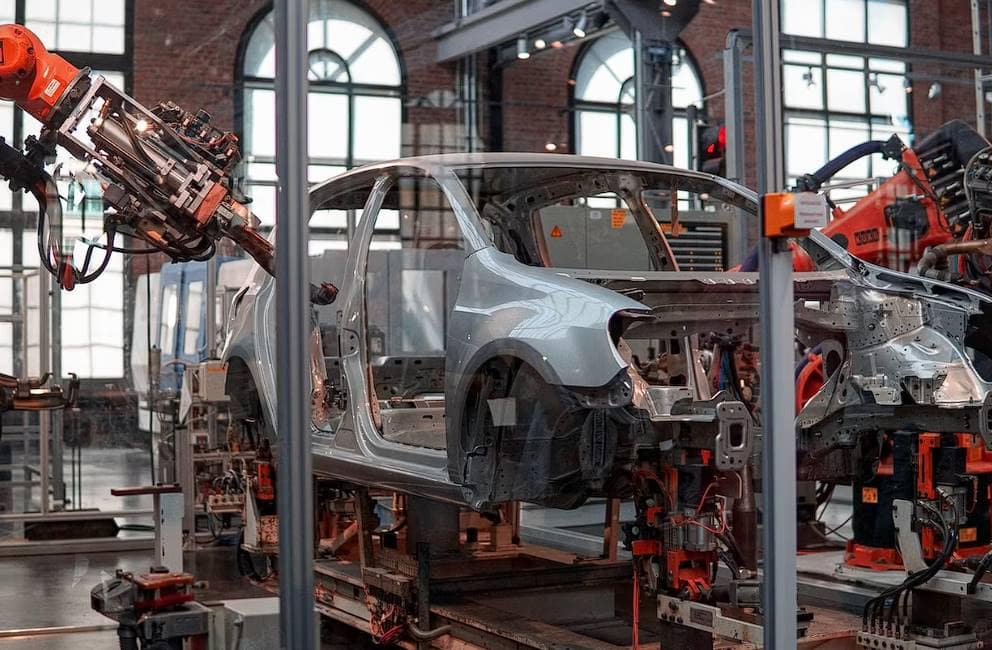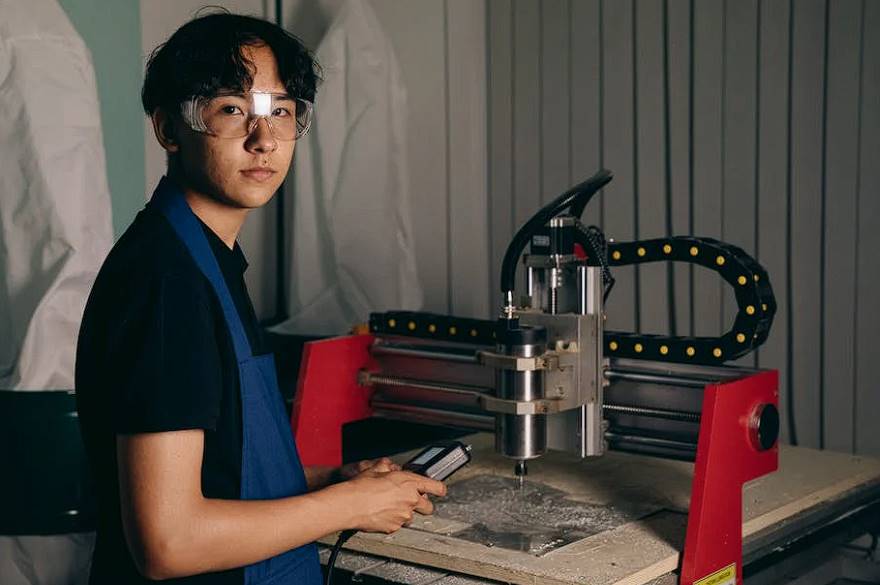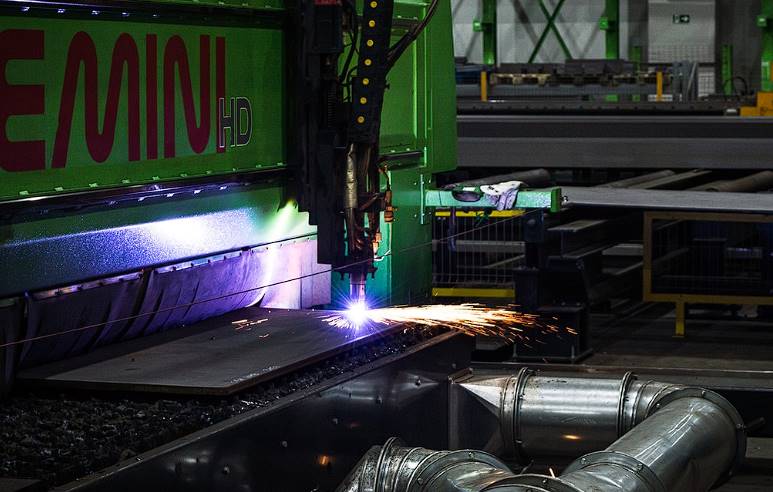Despite its apparent simplicity, this question is of the utmost importance for anyone engaged in the design or manufacturing of metal components. This is because it directly impacts the selection of the machinery, materials, and methods utilised during the production process.
Because the ability to bend metal sheets or plates with precision is crucial in producing everything from straightforward brackets to intricate machinery components, it is essential to have a solid understanding of the bending capacity of a press brake. In the following blog post, we will look into the several aspects that impact the bending capacity of a press brake. These considerations include the type of metal, the bend's length, and the press brake's specific properties.
This lesson will cover the intricacies of bending various metals, including steel, aluminium, and copper, as well as how the qualities of these metals influence the bending process. In addition, we will talk about the technological improvements that have increased the capabilities of modern press brakes, making it possible for metal bending operations to be performed with better precision and efficiency.
Factors Influencing Bending Capacity
The bending capacity of a press brake is influenced by many factors determining the precision and quality of the bends it can achieve. These factors range from the material properties and tooling to the machinery's technical specifications and the operator's skill. Here's a detailed look into these critical factors:
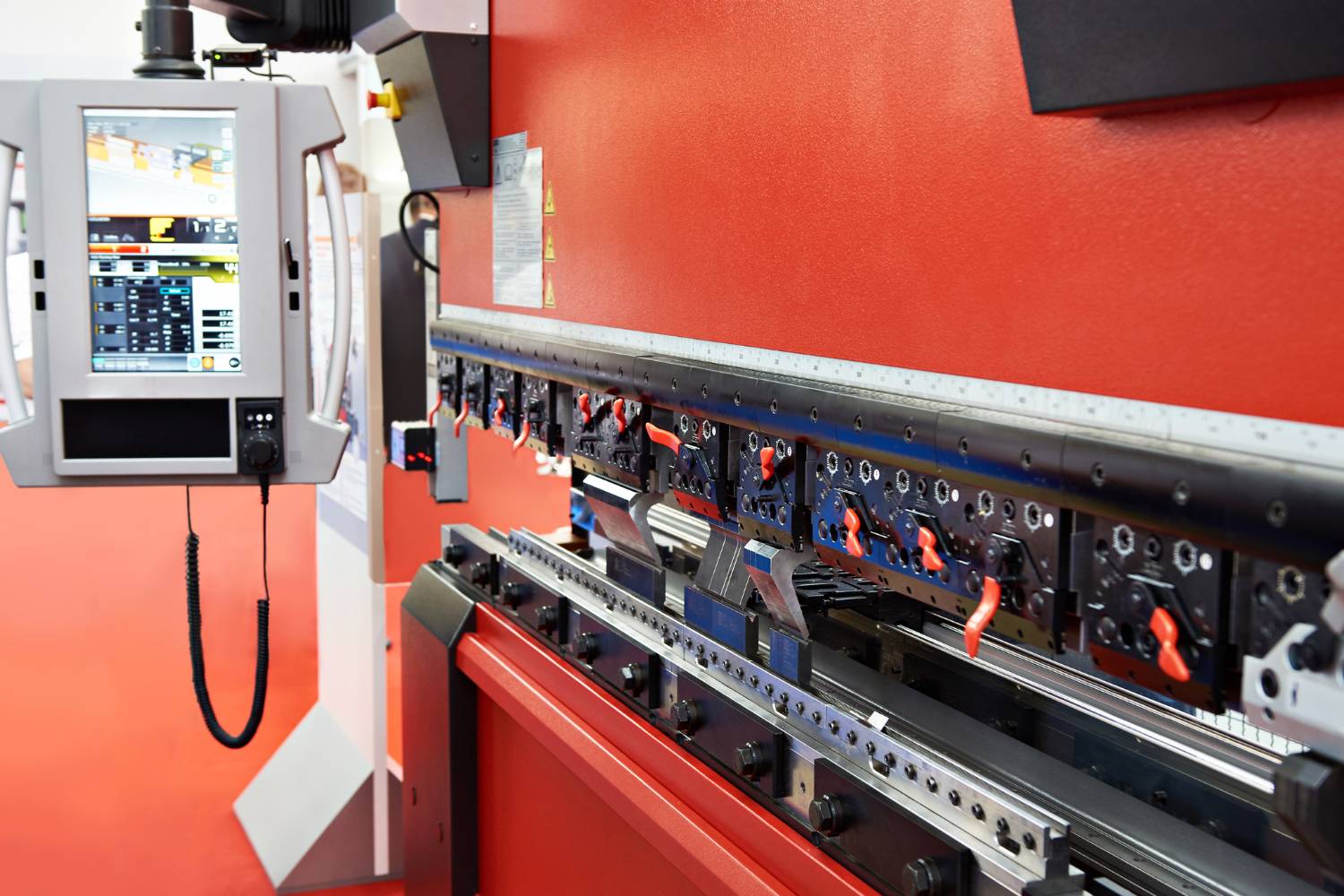
Material Properties:
- Sheet Material: The type of material and its properties, such as thickness, hardness, and grain direction, significantly affect the bending process. Materials with higher tensile strength require more bending Force, impacting the machine's capacity.
- Stress and Plate Thickness: Uneven stress distribution or inconsistent plate thickness can lead to variations in bending accuracy. Uniformly stressed and consistently thick plates yield higher precision in bends.
Press Brake Tooling:
- Tooling Accuracy: The precision of the tooling itself is paramount. Inaccurate tooling leads to less precise bends. Ensuring that the upper dies' edges and angles match the lower dies' notches is crucial.
- Die Compensation Device: The accuracy of the press brake's die compensation device directly influences bending precision. CNC-controlled compensation devices offer more accurate adjustments across different plate positions than manual adjustments.
Machinery Specifications:
- Mechanical Manufacturing Accuracy: The manufacturing accuracy of each part of the press brake, including the straightness of the clamping Opening, the repetitive and arbitrary positioning accuracy of the Y1 and Y2 axes, and the clearance between the slider and guide rail, all contribute to the overall bending accuracy.
- Frame and Slider: The strength and precision of the frame and slider and the consistency of the connection between the oil cylinder and the slider are essential for achieving accurate bends.
Human Factors:
- Operator Skill: The skill and experience of the operator play a significant role. Even with automated systems, the operator's ability to correctly set up and adjust the machine affects the outcome.
- Automation: Adopting robotic press brakes can minimise the impact of human error, enhancing consistency and precision in bending operations.
Additional Considerations:
- Clamping Precision: The precision of the clamp holding the top punch affects the overall bending accuracy. High-precision clamping ensures that the bends are consistent and accurate.
- Material Support: The use of front material supports and back gauge systems with high repeat positioning accuracy further contributes to the precision of bends.
Calculating Bending Capacity
The bending capacity of a press brake is determined by several factors, including the type of material being bent, the length of the bend, and the specific characteristics of the press brake itself. Here's an overview of how to calculate the bending capacity of a press brake, drawing insights from various sources:
Material Thickness And Type:
The thickness and type of material are primary factors in calculating bending capacity. Different materials have varying tensile strength levels, directly impacting the Force required to achieve a bend. For instance, bending a thick plate of high-tensile steel requires more Force than bending a thin aluminium sheet.
Length Of The Bend:
The length of the bend also plays a significant role in determining the required bending force. Longer bends require more Force across the length of the bend. A press brake's bending capacity is often rated based on bending a certain length of mild steel to a specific thickness.
Press Brake Specifications:
The specifications of the press brake, such as its tonnage, type (hydraulic, mechanical, electric), and features (CNC control, tooling options), influence its bending capacity. Higher tonnage press brakes can handle thicker and more robust materials.
V-Die Opening:
The size of the V-die opening relative to the thickness of the material being bent affects the bending capacity. A general rule of thumb is that the width of the V-die opening should be approximately eight times the thickness of the material.
Bending Force Calculation:
The bending force can be calculated using the formula: Bending Force = (Material Tensile Strength x Material Thickness² x Length of Bend) / (V-Die Opening x Constant). The constant varies depending on the unit of measurement and the specific material being bent.
Safety Margin:
It's essential to consider a safety margin when calculating bending capacity to prevent overloading the press brake. A common practice is operating the press brake at no more than 80% of its maximum rated capacity.
Technological Advancements And Their Impact
The evolution of press brake technology has significantly transformed the metal fabrication industry, introducing a new era of efficiency, precision, and safety. This transformation is primarily attributed to advancements in CNC technology, automation, and sophisticated software and hardware integration. Here's an overview of how these technological advancements have reshaped press brake operations:
CNC Technology And Automation:
The introduction of CNC (Computer Numerical Control) technology has been a game-changer for press brake operations. CNC press brakes offer unparalleled precision by allowing operators to program detailed bending instructions into the machine. This not only reduces the margin for error but also ensures consistent results across multiple operations. Automation further enhances this by streamlining the bending process, reducing manual labour, and increasing throughput.
Software Adaptations:
Modern press brakes are equipped with advanced software that adapts to material behaviour in real-time. This software utilises internal and external sensing, such as laser measurement systems, to account for material properties like crowning and deflection variations. This adaptability ensures high precision in bending operations, even with materials that exhibit inconsistent characteristics.
Adaptive Bending:
New press brakes can pre-calculate and adjust for spring back, deflection, and varying tensile strengths during bending. This is achieved through mechanical or hydraulic adjustments on the lower beam, ensuring that each bend is accurate regardless of material inconsistencies. Some systems also monitor tonnage throughout the cycle, making real-time adjustments to maintain precision.
Offline Programming:
Offline programming capabilities have revolutionised the setup process for press brakes. By developing press brake programs directly from 3D drawings before determining the blank size, operators can quickly input the press brake's properties to ensure accuracy. This eliminates manual programming on the factory floor, allowing the press brake to remain in constant production.
Safety And Efficiency Enhancements:
Technological advancements have also led to significant improvements in safety and efficiency. Modern press brakes feature integrated safety systems as standard equipment, making operations safer and reducing the incidence of press-related injuries. Additionally, precision-ground, segmented bending tools and active angle compensation technology have made setting up press brakes faster, more ergonomic, and more accurate.
Environmental Considerations:
Energy efficiency and sustainable manufacturing practices have become increasingly important. Modern press brakes are designed to be energy-efficient, contributing to reduced operational costs and a lower environmental impact. This aligns with the industry's move towards more sustainable manufacturing processes.
Practical Considerations In Bending Thick Metal
Bending thick metal on a press brake involves several practical considerations to ensure accuracy, efficiency, and safety. These considerations are crucial for achieving the desired bend quality while maximising the capabilities of the press brake. Here's a comprehensive look into these considerations based on insights from various sources:
Material Properties And Preparation:
- Understanding Material Behavior: Different metals have unique properties affecting how they bend, including tensile strength, hardness, and elasticity. Knowing these properties helps you choose the proper bending techniques and tooling.
- Surface Preparation: It is essential to ensure the metal surface is clean and free from contaminants or coatings that could affect bending accuracy or cause tool damage.
Tooling Selection And Care:
- Appropriate Tooling: It is critical to select the correct punch and die based on the metal thickness, type, and desired bend angle. Using tooling not suited for thick metal can result in inaccurate bends or tool damage.
- Tool Maintenance: Regularly inspect and maintain bending tools to prevent defects in the bend. Worn or damaged tooling can compromise bend quality and accuracy.
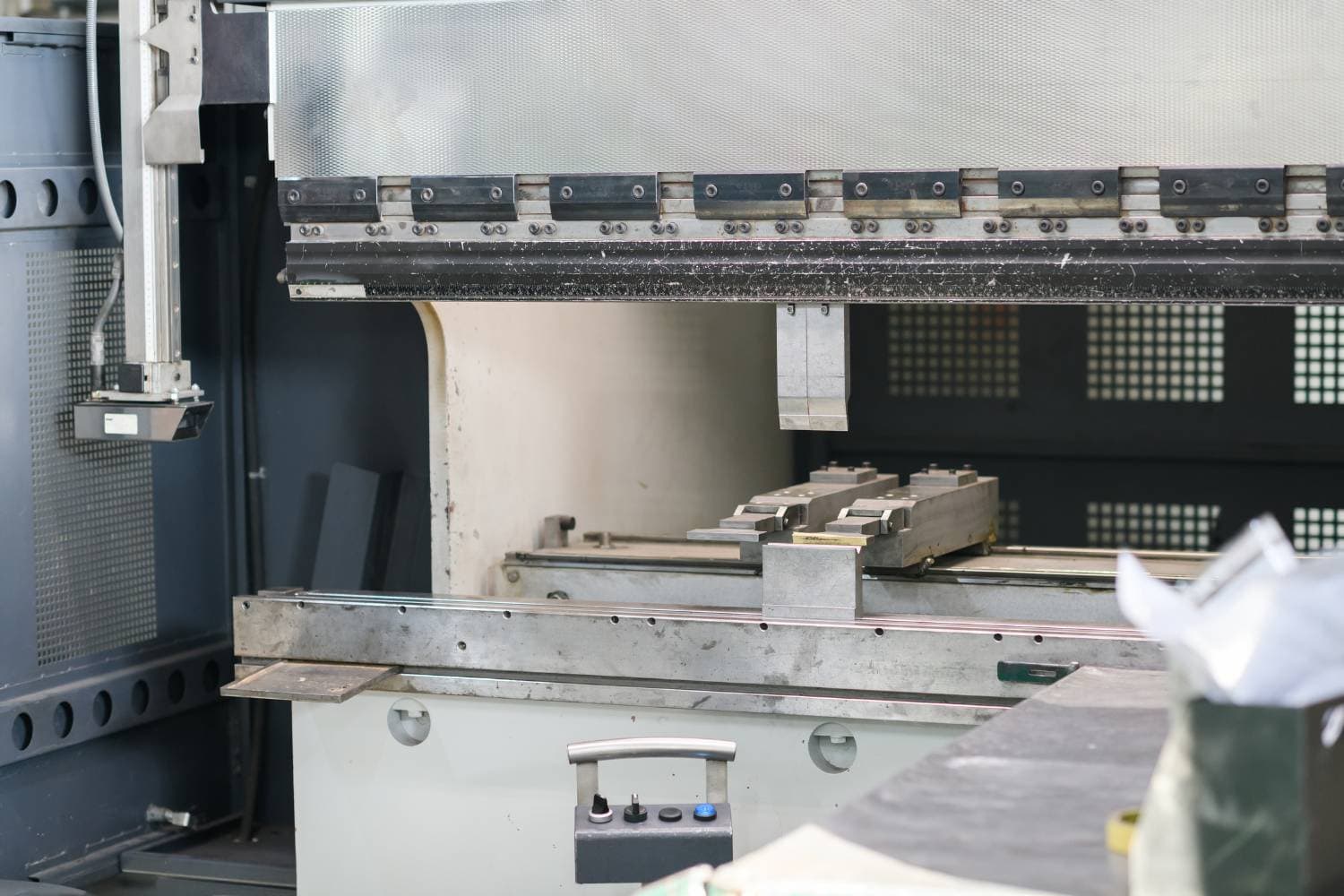
Machine Capacity And Settings:
- Understanding Machine Limits: Knowing the maximum bending capacity of the press brake is vital to avoid overloading the machine. Bending metal thicker than the machine's capacity can cause damage to the press brake.
- Precise Machine Settings: Adjusting the press brake settings, such as the bending Force, speed, and back gauge position, according to the specific bending job ensures optimal bending performance.
Bending Techniques:
- Air Bending vs. Bottom Bending vs. Coining: Choosing the proper bending technique based on the material thickness and required bend accuracy. Air bending is commonly used for its flexibility, but bottom bending or coining may be necessary for thicker metals or when high precision is needed.
- Use of Crowning Systems: A crowning system can compensate for machine deflection and ensure a uniform bend along the entire length for long bends or when bending thick metal.
Operator Skill And Safety:
- Experienced Operators: Skilled operators with knowledge of press brake operation, material behaviour, and safety protocols are essential for successfully bending thick metal.
- Safety Measures: Implementing safety measures, such as using light guards and safety mats and following proper operating procedures, is crucial to prevent accidents during bending.
Post-Bending Considerations:
- Inspection and Quality Control: After bending, inspecting the workpiece for accuracy, consistency, and any defects is essential. This ensures that the bend meets the required specifications and quality standards.
- Springback Compensation: Accounting for springback, the tendency of metal to return partially to its original shape after bending is crucial when working with thick metal. Adjusting the bend angle to compensate for the spring back ensures the final product meets the desired dimensions.
Conclusion
A press brake's bending capacity is crucial for producing various metal components, such as brackets and intricate machinery components.
The bend's length and the press brake's specific propertiesMaterial properties, such as sheet material, stress and plate thickness, tooling accuracy, die compensation device accuracy, machine specifications, frame and slider strength, operator skill, automation, clamping precision, and material support, all play a significant role in determining a press brake's bending capacity.
The bending capacity of a press brake is determined by several factors, including the type of material being bent, the length of the bend, and the specific characteristics of the press brake itself. Material thickness and type are primary factors, as different materials have varying levels of tensile strength, which directly impacts the Force required to achieve a bend.
Press brake specifications, such as tonnage, type, and features, also influence its bending capacity. The V-die opening size relative to the material's thickness affects the bending capacity. The bending force can be calculated using the formula: Bending Force = (Material Tensile Strength x Material Thickness² x Length of Bend) / (V-Die Opening x Constant).
Press brake technology has significantly transformed the metal fabrication industry, introducing a new era of efficiency, precision, and safety. Advancements in CNC technology, automation, and the integration of sophisticated software and hardware have reshaped press brake operations. CNC technology allows operators to program detailed bending instructions into the machine, reducing the margin for error and ensuring consistent results across multiple operations. Modern press brakes have advanced software that can adapt to material behaviour in real-time, ensuring high precision in bending operations.
Offline programming capabilities have revolutionised the setup process for press brakes, allowing operators to input the press brake's properties to ensure accuracy quickly. Integrated safety systems, such as standard equipment, precision ground, segmented bending tools, and active angle compensation technology, have enhanced safety and efficiency.
Energy efficiency and sustainable manufacturing practices have become increasingly important, with modern press brakes designed to be energy-efficient, contributing to reduced operational costs and a lower environmental impact.
Practical considerations in bending thick metal on a press brake include understanding material properties and preparation, selecting appropriate tooling, maintaining tooling, understanding machine capacity and settings, choosing bending techniques, using crowning systems, and having experienced operators. Safety measures, such as using light guards and safety mats, are crucial to prevent accidents during the bending process. Post-bending considerations include inspection, quality control, and springback compensation, ensuring the final product meets the desired dimensions.
Content Summary
- The thickness of metal a brake can bend is a critical question in metal fabrication.
- Engineers, fabricators, and enthusiasts alike seek to understand press brake capacities.
- The bending capacity impacts machinery, materials, and production methods selection.
- Precision bending is essential for producing everything from simple brackets to complex machinery.
- Several factors influence a press brake's bending capacity.
- Material properties, tooling, and the press brake's specifications play significant roles.
- The type of metal, its thickness, hardness, and grain direction affect the bending process.
- Higher tensile strength materials require more Force to bend.
- Uneven stress distribution or inconsistent plate thickness can affect bending accuracy.
- The precision of press brake tooling is paramount for achieving precise bends.
- The accuracy of the press brake's die compensation device influences bending precision.
- The manufacturing accuracy of the press brake parts contributes to overall bending accuracy.
- The strength and precision of the frame and slider are essential for accurate bends.
- The skill and experience of the operator significantly impact the bending outcome.
- Robotic press brakes can minimise human error, enhancing bending consistency.
- Clamping precision and material support further contribute to the precision of bends.
- Calculating bending capacity involves considering material thickness, type, and press brake specs.
- The length of the bend and the press brake's tonnage also determine bending capacity.
- The V-die opening relative to the material thickness affects bending capacity.
- A safety margin is essential to prevent overloading the press brake.
- Technological advancements have transformed press brake operations.
- CNC technology and automation have introduced precision and consistency in bending.
- Modern press brakes are equipped with software that adapts to material behaviour in real-time.
- Adaptive bending allows for adjustments for spring back and material inconsistencies.
- Offline programming capabilities have revolutionised press brake setup processes.
- Safety and efficiency enhancements have made operations safer and more accurate.
- Environmental considerations have led to the design of energy-efficient press brakes.
- Bending thick metal requires an understanding of material behaviour and proper tooling selection.
- Surface preparation is crucial for bending accuracy.
- Selecting the proper tooling and maintaining it is essential for bending thick metal.
- Understanding the press brake's maximum bending capacity is vital.
- Adjusting machine settings according to the specific job ensures optimal performance.
- Choosing the proper bending technique is crucial for thick metal.
- Using crowning systems can compensate for machine deflection.
- Skilled operators are essential for successfully bending thick metal.
- Implementing safety measures is crucial to prevent accidents.
- Post-bending inspection ensures the bend meets the required specifications.
- Springback compensation is crucial when working with thick metal.
- The bending capacity of a press brake is a complex topic requiring detailed understanding.
- Material properties significantly influence how thick a metal can be bent.
- Technological advancements have expanded the capabilities of modern press brakes.
- CNC technology has been a game-changer in press brake operations.
- Adaptive bending capabilities enable real-time adjustments during the bending process.
- Offline programming has streamlined the setup process for press brakes.
- Safety enhancements have made press brake operations safer.
- Energy efficiency is an essential consideration in press brake design.
- Practical considerations in bending thick metal include tooling selection and machine settings.
- Operator skill and safety measures are crucial for bending thick metal.
- Post-bending considerations like inspection and springback compensation are essential.
- Understanding the factors influencing bending capacity is critical to practical metal fabrication.
Frequently Asked Questions
The bending capacity of a press brake is determined by several factors, including the type of metal, the press brake's tonnage (force capacity), the length of the bend, and the press brake's specific design and capabilities.
Yes, different metals have varying tensile strengths and properties. For example, bending a thick plate of high-tensile steel requires more Force than bending a similar aluminium thickness. The material's properties directly impact the amount of Force needed for bending.
The longer the bend, the more Force is required to achieve it. The bending capacity of a press brake is often specified for bending a certain length of mild steel to a specific thickness. Adjustments need to be made for longer bends or different materials.
Absolutely. The press brake's design and specifications, such as its tonnage, the type of drive system (hydraulic, mechanical, electric), and features like CNC control and tooling options, all influence its bending capacity.
The size of the V-die opening relative to the thickness of the material being bent is crucial. For optimal bending, a general rule is that the width of the V-die opening should be approximately eight times the thickness of the material.

